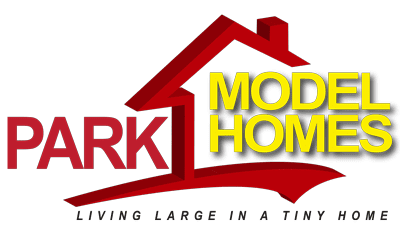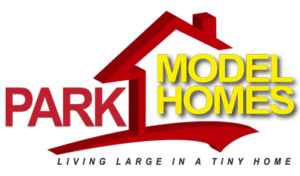In our most recent post, we shared some of the benefits of moving into a tiny house. Downsizing to a smaller home allows you to streamline and simplify your life, reducing costs and increasing flexibility.
But one thing you probably have noticed while exploring our site is that our homes are called “park models,” not “tiny houses.” What is the difference between the two, and what does it mean to you as a homebuyer?
What is a Park Model?
At a glance, park model homes and tiny houses appear to be interchangeable. They are both small houses, frequently portable, and generally feature similar layouts.
The chief difference between the two concerns how they are classified. Put simply, a park model is a recreational vehicle. It doesn’t look like an RV, but that is exactly what it is.
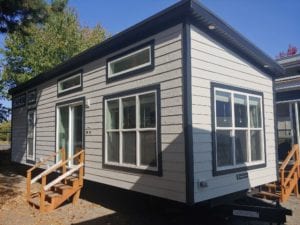
A park model:
• Is under 400 square feet.
• Can be up to 12’ in width.
• Is portable on a wheeled chassis.
Since a park model is an RV, you need to register it and get tags for it. You also need to insure it, just as you would any other vehicle.
What is a Tiny House?
While park models need to fit the criteria listed above to be classified as such, “tiny house” is not an official classification.
Informally speaking, a tiny house is simply a small home. Some people say that a tiny house must be 300 square feet or less. But others say that 500 square feet or less counts, or even up to 600 square feet.
Here’s the thing—from a regulatory standpoint, tiny houses exist in a complicated gray area.
Woodland Park, one of our manufacturers, explains, “it’s also important to understand that, despite the name, Tiny Homes do not strictly qualify as homes either. There are federal, state, and local laws which require that permanent residences are built to a federal, state, or local building code or standard, and very few Tiny Homes actually meet these criteria.”
Technically, all park model homes can be considered tiny houses. But not all tiny houses are park model homes.
Sometimes, you will hear us call our own park models “tiny houses.” We do this mostly because we know that a lot of folks who find us are more familiar with that term.
But the houses we personalize and sell here are all park model RVs.
Benefits of Choosing a Park Model Home Over a Tiny House
Despite the fact that tiny houses are often not “homes” from a legal standpoint, you might wonder why a park model RV is a superior option. Here are a few reasons to consider.
1. It is easier to find a place to put a park model home.
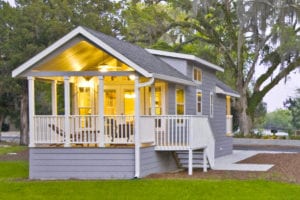
Because tiny houses are not considered “homes” from a regulatory standpoint, they can be a challenge to place.
If you check residential codes in the area you plan to live, for example, you might discover you can technically only live in a “tiny house” if it is an accessory dwelling unit (ADU).
It is also common to find that if you want to put a building on a foundation, it needs to be larger than a tiny house.
A tiny house on wheels, hypothetically, can be placed in an RV park or campground. But if the house is not actually an RV, there is a good chance the campground will turn it away.
As a park model home is classified as a true recreational vehicle, you will probably find far more options for where you can park it, whether seasonally or permanently.
2. Park model homes are built to higher standards.
A lot of houses referred to as “tiny houses” are not built professionally to ANSI code. But because park model homes are RVs, they must be built to code.
This is important for a couple of key reasons:
• A home must be built to code for zoning and planning boards to accept it.
• Building a house to code ensures it is safe to inhabit.
So, choosing a park model home over a “tiny house” helps to ensure that you and your family are as safe in your small, portable residence as you would be in a traditional full-size home.
3. Relocating a park model home is a breeze.
Want a home you can take with you on all of life’s journeys? Since a park model is a recreational vehicle, you can pick up and move as quickly and easily with it as you could any other RV.
At the same time, you get to enjoy a beautiful setting that looks and feels just like a stick-built home.
This isn’t the case for all tiny houses. Some tiny homes are meant to rest permanently on foundations. Others are designed to move, but may not be as safe or easy to drive to a new destination as a park model RV.
Our homes hold up better to the stresses of transport. They’ll stand the test of time, no matter where the road leads.
4. Park model homes are roomy, comfortable, cost-effective, and stylish.
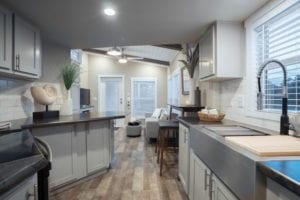
One more reason to think about moving into a park model as compared to a tiny house is the fact that you can live big in a small footprint.
Compare the layouts of our park model homes to those of many of the tiny houses you have seen, and there is no contest.
When it comes to openness, natural light, spaciousness, storage areas, and overall comfort, a park model home cannot be topped.
Have Questions About Park Models? Give Us a Call
You now know more about the differences between tiny houses and park models. But we know you may still have more questions. To learn more about park model homes or to request a custom quote, please give us a call at 1-888-222-2699. We can help you figure out if a park model home is right for you, and can assist you in choosing a custom layout to become the home of your dreams.
